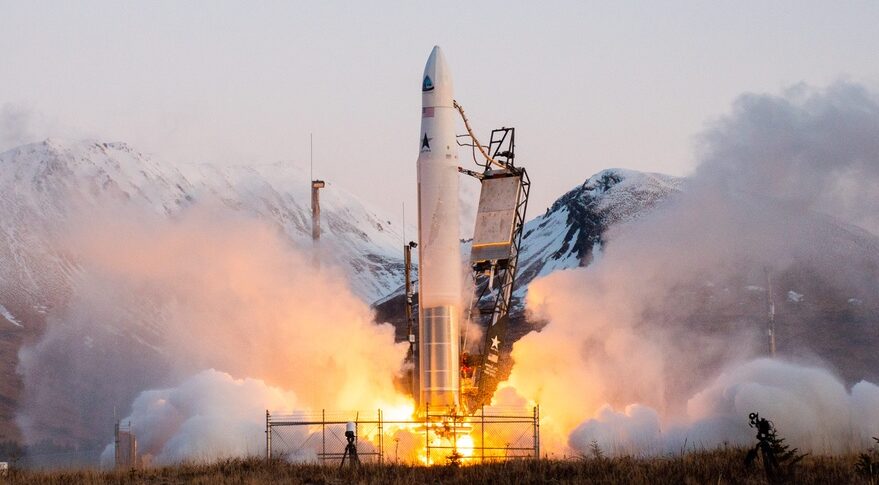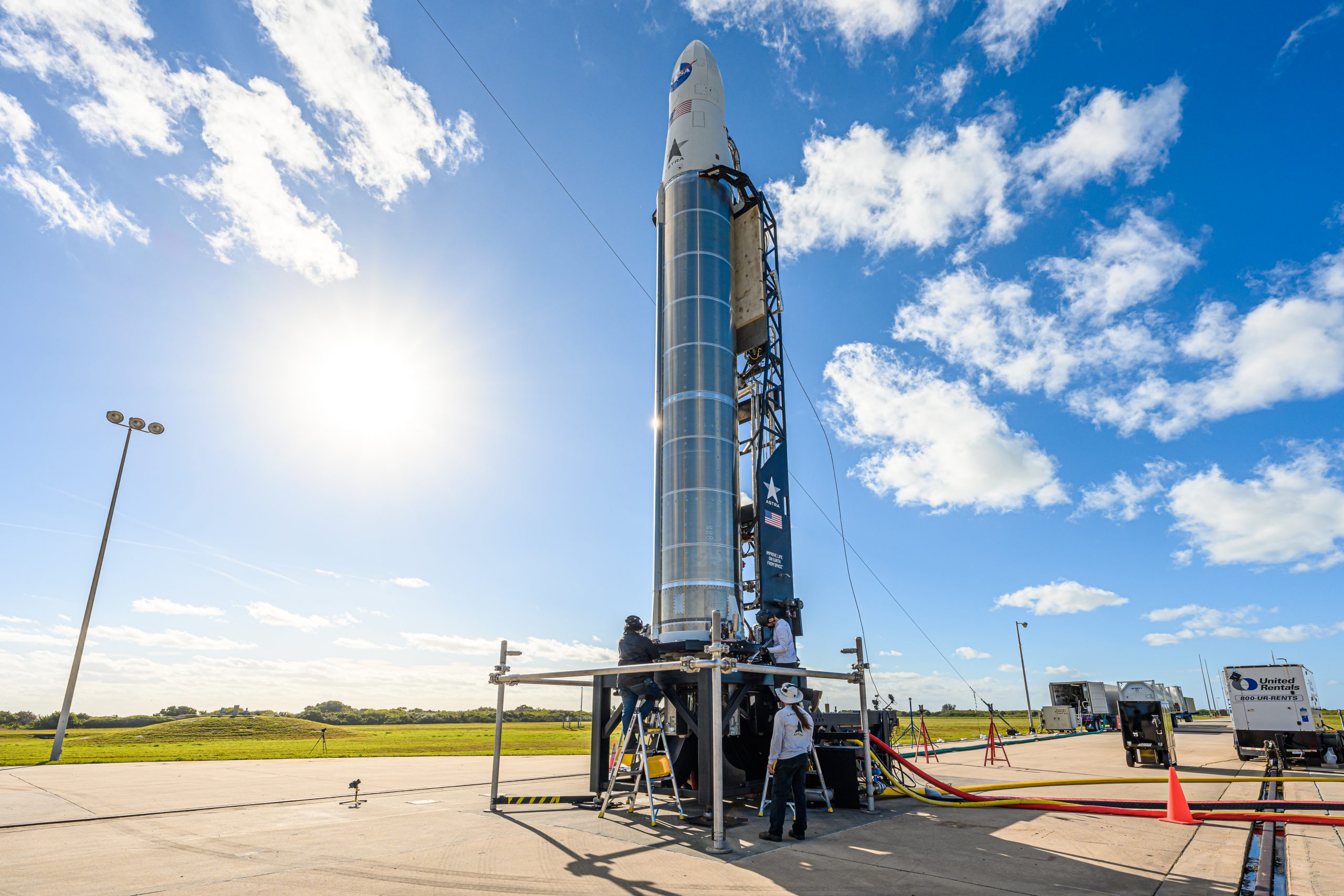
Astra’s New Rocket, Recent Partnership, & General News
As the space industry continues to grow, so does the competition between different companies. This has multiple effects including encouraging companies to try new and ambitious ideas. Astra is following suit as they attempt to become a significant player within the ever-growing industry. Most recently, they announced exactly some of the ways they plan to improve in the future.
Specifically, over the past few weeks, Astra has announced some big news. This includes hints at a new and improved launch vehicle 2.0, a partnership with SaxaVord Space, and the future of Astra. All of which are meant to help the company continue to grow and compete as the demand for launch services continues to grow significantly.
While Astra only recently reached orbit for the first time successfully, the company is already moving on to the future of accessing space. This approach comes with added risks, however, ambitious ideas like these are important for saving money, time, and more. Here I will go more in-depth into some of the hints about Astra’s next launch vehicle, the partnership, and other updates from the company.
Launch System 2.0

Oftentimes, a new rocket gives companies an opportunity to apply what they have learned from previous experiences and plan for the future of the company. Astra has made a lot of impressive progress in recent months. These months include reaching orbit and general success with the current small-lift launch vehicle. However, based on recent news from the company, it looks as if the company will soon begin working on a new and improved launch system. While there is very little information so far about the new rocket, Astra did provide a few teasers about what to expect. The first came in a tweet released by the company only a few days ago. Specifically, on May 12th, Astra tweeted saying, “Soon.” This tweet included an image of what looks like a partially outlined rocket. Next, later that same day, Astra tweeted again this time mentioning, “Co-founder @aplondon: We believe scale will allow us to reach a lower cost per launch and reasonable cost per kilogram.” This tweet came with a small graph highlighting the cost per launch comparison with a small and big launch. Finally, on the same day they tweeted, “Launch System 2.0: Designed for frequent launch, Up to 300 kg, Starts at $3.95M.” This included an image pointing out cadence, capacity, and cost.
In addition to these tweets, Astra provided some more information on the rocket during its Spacetech Day event. Launch System 2.0 as mentioned prior involves a new rocket 4.0. It is meant to be a lot more powerful than Astra’s current launch vehicle. Right now Astra uses 5 Delphin engines, which combine to produce 35,000 pound-force of thrust. However, the new rocket is expected to use only two engines that produce a combined 70,000 pound-force of thrust. Lastly, CEO Chris Kemp provided some additional information on the new rocket. He said, “It will still be, critically, a mobile launch system. The rocket will still be transportable in shipping containers. It really differentiates us from the large rockets when you can pack the entire thing up, put it on a plane, a truck, a train, a container ship, move it anywhere around the world discreetly.” This makes it clear that Astra is still interested in keeping the rocket mobile and capable of quick and consistent launches. As time goes on, we will have to keep track of Astra’s progress on this new launch system.
SaxaVord Space Partnership

In addition to the recent news of a new launch system, the company also announced a partnership with SaxaVord Space. Specifically, on May 10th, Astra announced they were partnering to increase access to space, by providing dedicated orbital launch services to a growing satellite market. Subject to the entry of definitive agreements and regulatory approvals, rocket launches are expected to begin in 2023. SaxVord Spaceport (SaxaVord) is the UK’s first vertical satellite launch facility and ground station located at Lamba Ness in Unst, Shetland. Given this location is the UK’s highest point of latitude, SaxaVord offers customers a geographic competitive advantage enabling unrivalled payloads per satellite, launch site operations, a network of ground stations and in-orbit data collection and analysis. SaxaVord has received endorsement from the UK Space Agency’s (UKSA) Spectre Report, formed industry-leading partnerships and has been chosen to host the UKSA’s UK Pathfinder launch, which will be delivered by Lockheed Martin and ABL Systems, in 2022. Astra intended to increase its launch cadence with access to yet another launch facility.
In terms of the partnership, “This agreement between SaxaVord Spaceport and Astra is great news for Shetland and represents another step towards our shared ambition of bringing vertical launch satellite capability to Scotland,” said Ivan McKee, Scottish Minister for Business, Trade, Tourism and Enterprise. “Companies like this are vital to achieving the aims of our National Strategy for Economic Transformation that will support a nation of entrepreneurs and innovators in areas like small satellite technology and Scotland’s growing space industry.” With its flexible, mobile approach, Astra can transport and connect a fully functional launch system to a simple concrete pad for launches. SaxaVord UK Spaceport would expand Astra’s capacity at key inclinations. Together, they are expected to accelerate access to space for customers launching in the UK.
“Astra is an agile, fast-moving company on pace to establish a successful track record,” said Robin Huber, Director of Business Development at SaxaVord UK Spaceport. “We look forward to working with their team to build new launch capabilities in the UK. Their mission to improve life on Earth from space is closely aligned with our own values, and we believe that this exciting new relationship will develop into a strong, lasting partnership.” “The additional inclinations, flexibility and launch capacity that this partnership enables will allow us to meet the needs of Astra’s customers and align directly with SaxaVord UK Spaceport’s economic investment and environmental goals,” said Matt Ganser, Vice President of Business Operations at Astra. “We are excited to work with this partner to open another spaceport from which we would hope to meet the growing demand for dedicated launch out of the UK.” “This new partnership between Astra and SaxaVord UK Spaceport is another great example of the strong interest from the international space community in operating from UK spaceports,” said Matt Archer, Director of Commercial Space at the UK Space Agency. “By attracting global partners and developing a home-grown launch industry, we can cater for the diverse needs of small satellite manufacturers and operators, while benefitting people and businesses across the UK. It is fantastic to welcome Astra into the UK’s thriving launch community.” It’s clear from these quotes that everyone involved is excited about the opportunity and what it offers for the future of the space industry and more.
Taking a closer look at SaxaVord, the company has quite a bit to offer in terms of space services. The Space Port has been designed to host a wide variety of launch missions on rockets with payloads of up to 1.5 tonnes into Sun-Synchronous, Polar, and High Inclination orbits as well as suborbital flights. But they point out the company is more than just a launch site operator – they will actively support their partners by constantly adding to and expanding their facilities and services. They know that the success of their partners is fundamental to their own development. Shetland is the ideal location for Europe’s premier spaceport, with a long history of serving and supplying complex industries such as oil & gas with sophisticated engineering needs and excellent logistics. SaxaVord Spaceport can support a wide range of requirements, from engine test benches to research and development. Looking at facilities, located on the Lamba Ness peninsula, the spaceport will host up to three launch pads and three integration hangars, each for shared or exclusive use. SaxaVord Space Port will support LSPs to optimise their concept of operations in terms of reduced costs, flexibility, and increased launch cadence. The Space Port has been designed to allow for safe and responsive yet cost-effective launch operations. Their facilities will allow for launch vehicle preparation and integration, payload processing, fairing and mating. LSPs will be able to prepare for and integrate multiple launch missions simultaneously. Lastly, while standardization and sharing certain facilities has the advantage of reducing costs for launch missions, they understand the importance of providing bespoke and or additional facilities.
Conclusion
Throughout the space industry, we are watching many different companies work on new and ambitious projects. Astra Space is no exception with the development of a new launch system and partnership with SaxaVord Space. These new events are expected to not only increase the company’s launch cadence but also their opportunities for the future. We will have to wait and see how it progresses and the impact it has on the space industry.
